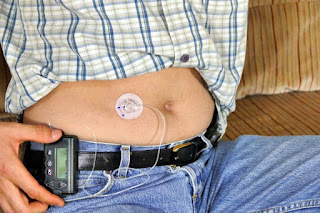Artificial pancreas improves glycaemic control, without increased hypoglycaemia in T2D
Dr.Dram,profdrram@gmail.com,Hiv,Hepatitis and sex diseases expert +917838059592,+919434143550
 Insulin delivery using an automated close-loop system significantly improves glycaemic control than conventional insulin injection among hospitalized patients with type 2 diabetes (T2D) receiving noncritical care, without increasing the risk of hypoglycaemia, according to a study presented at ADA 2018.“Conventional insulin therapy increases the risk of hypoglycaemia.Inpatient glycaemic management is hindered by the need for vigilant and constant blood glucose monitoring and the administration of insulin with meals, which increases the workload of hospital staff members,” said Dr Lia Bally of Inselspital, Bern University Hospital in Bern, Switzerland.“Our study addressed the unmet need for better glycaemic control among hospitalized patients with diabetes, an issue that affects nearly all areas of in-hospital care, patient outcomes, and health care costs.”
Insulin delivery using an automated close-loop system significantly improves glycaemic control than conventional insulin injection among hospitalized patients with type 2 diabetes (T2D) receiving noncritical care, without increasing the risk of hypoglycaemia, according to a study presented at ADA 2018.“Conventional insulin therapy increases the risk of hypoglycaemia.Inpatient glycaemic management is hindered by the need for vigilant and constant blood glucose monitoring and the administration of insulin with meals, which increases the workload of hospital staff members,” said Dr Lia Bally of Inselspital, Bern University Hospital in Bern, Switzerland.“Our study addressed the unmet need for better glycaemic control among hospitalized patients with diabetes, an issue that affects nearly all areas of in-hospital care, patient outcomes, and health care costs.”
The closed-loop system (or artificial pancreas) comprises a continuous glucose monitor (CGM) which is coupled with a control algorithm that guides insulin delivery from an insulin pump based on real-time glucose readings from the CGM. Unlike the hybrid closed-loop systems currently on the market, the one used in the study is fully automated and hence, obviates the need for meal announcements. Glucose levels were also significantly lower in the closed-loop group than the control group (mean, 154 mg/dL vs 188 mg/dL; p<0.001).Furthermore, glucose variability was lower with closed-loop insulin delivery, especially for overnight period from midnight to 8 am (p=0.02).
There was no episode of clinically significant hyperglycaemia with ketonaemia or severe hypoglycaemia reported in either group.“In spite of enrolling a more challenging and more diverse inpatient population, we found that patients in the closed-loop group spent a higher percentage of time within the glycaemic target range than those in the control group and a lower percentage of time above the glycaemic target range,” noted Bally and co-authors.
The close-loop system has the advantage of a finely tuned, instantaneous modulation of insulin delivery with continual adaptation to changing insulin requirement in response to glucose levels. Nonetheless, the close-loop system may require integration with electronic record in hospitals and training for healthcare professionals before its use become widespread, the researchers suggested
- Kidney stones universally present hazard in north india,dillution by water prevent it
- Steroid and placebo effect equally for mild persisting asthma with low sputum eosinophils
- Government wants to fix public healthcare staff shortages with ayush docs: will it work?
- Plea in hc for payment of salaries of edmc, north mcd teachers and doctors
- 7 indian pharma companies named in us lawsuit over inflating generic drug prices
- Woman in up dies after explosion in her mouth during treatment,what is diagnosis?
- Woman in up dies after explosion in her mouth during treatment,what is diagnosis?
- Woman in up dies after explosion in her mouth during treatment,what is diagnosis?
- Air pollution ! mothers organising rally in london,anaesthetist choosing gas,will india follow?
- Cardiac arrest is always not sudden as understood -a study

 Comments (
Comments ( Category (
Category ( Views (
Views (